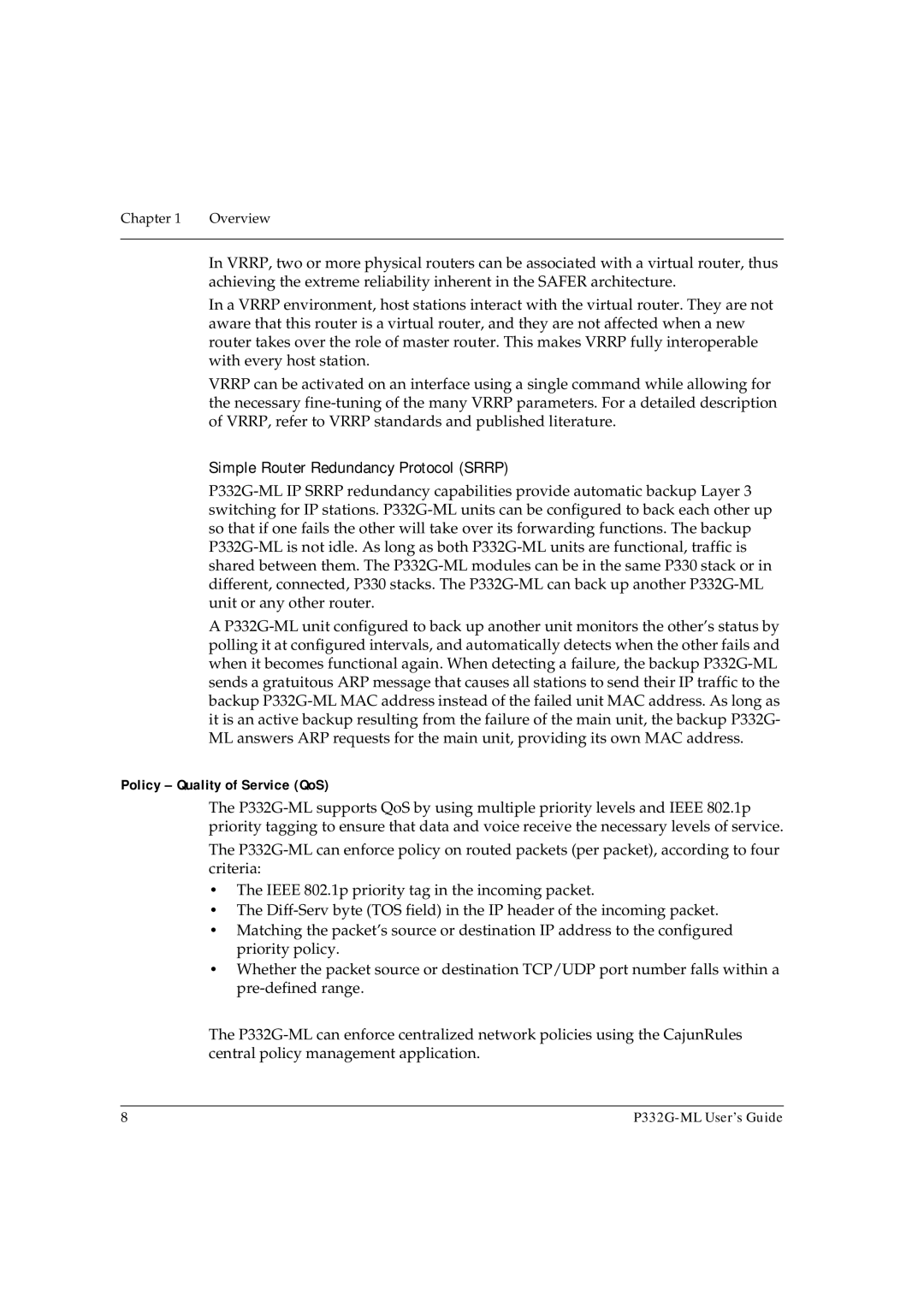Chapter 1 | Overview |
|
|
In VRRP, two or more physical routers can be associated with a virtual router, thus achieving the extreme reliability inherent in the SAFER architecture.
In a VRRP environment, host stations interact with the virtual router. They are not aware that this router is a virtual router, and they are not affected when a new router takes over the role of master router. This makes VRRP fully interoperable with every host station.
VRRP can be activated on an interface using a single command while allowing for the necessary
Simple Router Redundancy Protocol (SRRP)
A
Policy – Quality of Service (QoS)
The
The
•The IEEE 802.1p priority tag in the incoming packet.
•The
•Matching the packet’s source or destination IP address to the configured priority policy.
•Whether the packet source or destination TCP/UDP port number falls within a
The
8 |
